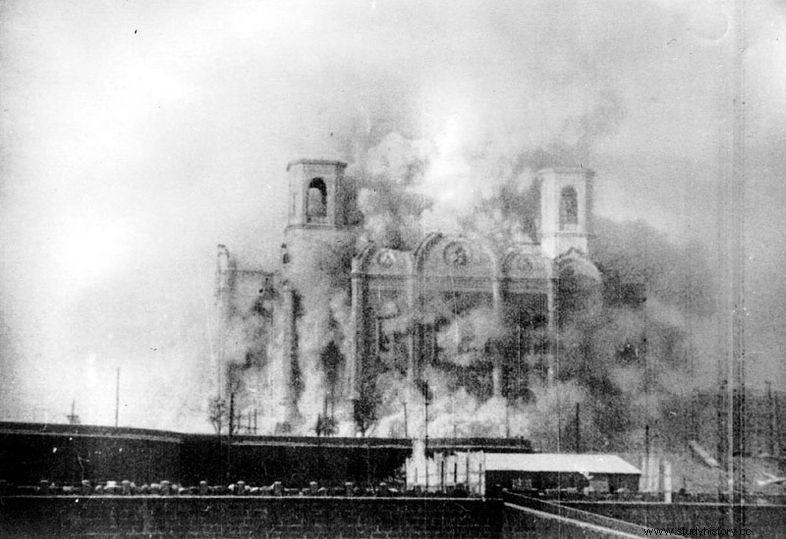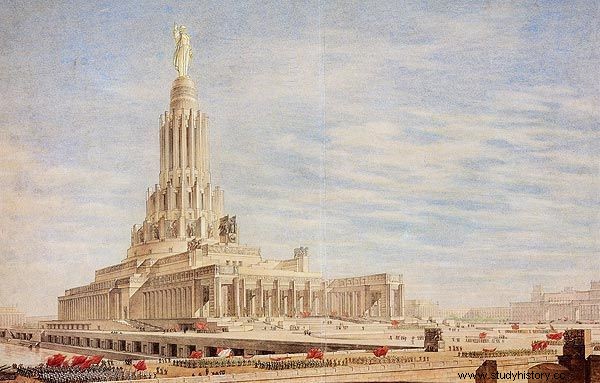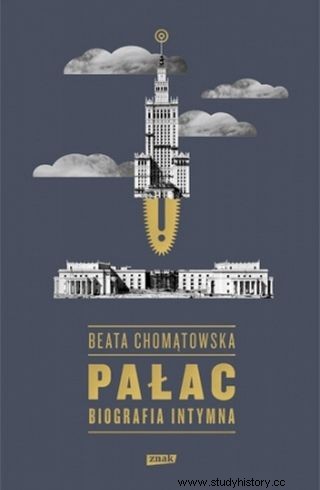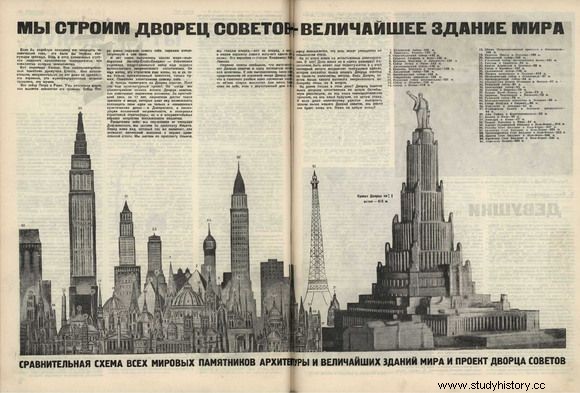The Palace of Soviets in Moscow was to be the tallest building in the world and the expression of the brightest dream of mankind - the dream of communism. The greatest architects of the world at that time ... and a Jew from Warsaw entered the competition for its design. How did he do? What does it have in common with the Palace of Culture and Science in Warsaw?
Grzegorz Sigalin was one of the most talented architects of pre-war Warsaw. He came from an enterprising family - his grandmother was Klaudia Sigalina, the owner of the famous kefir factory. He graduated with honors from the Faculty of Architecture of the Warsaw University of Technology and began designing buildings together with his older brother, Roman. Together, they became the authors of several tenement houses in Warsaw, Gdynia and Łódź. Grzegorz wanted something more.
Then a competition for the design of the Palace of Soviets was announced in Moscow. At first, Sigalin probably remembered 1920, when he wanted to beat the Bolshevik and even enlisted in the army for this purpose . However, the competition was a great opportunity to achieve the success he had dreamed of for a long time.
The fact that the Palace of Soviets was at odds with his youthful convictions must have been relegated to the background. He entered the competition together with two colleagues, Henryk Blum and Bertold Lubetkin.
The architectural revenge of the proletariat
The idea to build a building that would become a symbol of the victory of communism and overshadow the mansions of bourgeois Westerners was born as early as December 1922.

In order to make room for the construction of the Palace of Soviets, the Church of Christ the Savior had to be demolished first. The photo shows the moment she was blown up (source:public domain).
He was introduced to the deserving Bolshevik Sergei Kirov during the Congress of the Soviets of the USSR. It is quoted by Beata Chomątowska in the book “Pałac. Intimate biography ":
The Palace of Soviets [...] should be the revenge of the power of despised, once backward workers and peasants over the bourgeois West , a structure our enemies could not even imagine in a dream. This edifice should become a visible sign of the future power, the triumph of communism, not only in Poland, but also in the West.
Kirov's speech was, of course, received with applause, and soon the site was chosen for the construction of the Palace:the square where the Church of Christ the Savior stood. It was necessary to act quickly, so the temple was blown up and a great search began for an architect and a project that would meet the expectations of Comrade Stalin himself.
About the palace to the sound of the double bass
A competition for the design of the Palace of Soviets was announced in 1931. The organizers made sure that the news about him spread all over the world - out of 160 submitted projects, 24 were entries from abroad. Among the architects there are the greatest celebrities, such as Erich Mendelsohn, Auguste Perret and Le Corbusier, as well as "Trojka", i.e. the Sigalin, Blum &Lubetin team.
However, the young architects faced a difficult task. Their building, distinguished by a very modern shape resembling a spaceship, had to compete not only with the biggest names, but also with surprising ways of presentation. For example, Le Corbusier's show was full of dancing dances, accompanied by an architect playing a double bass.
The Swiss show, however, was of no avail. To the surprise of the foreign guests, and especially Le Corbusier himself, two Polish participants and an American made it into the final three. In the end, the mediocre and unremarkable (apart from the huge statue of the "liberated proletarian" at the top) Boris Jofan's building won.

Ultimately, the one by Boris Jofan was selected from among the projects announced. It is true that it was average and did not stand out with anything special, but at the top it was crowned with a "statue of an emancipated proletarian" (source:public domain).
Everything stays in the family
Grzegorz Sigalin finally lost to Jofan, but his project was awarded by Stalin himself. The young architect felt clearly appreciated, unlike Le Corbusier, who was mortally offended at the USSR. When two years later the Council of People's Commissars adopted the general plan for the reconstruction of Moscow, Sigalin was one of the first to move to the East.
He managed to find a job in the state architectural bureau, but like any resident of the USSR at that time, he could not feel completely safe. Soon enough of him was not heard of. It was only after the opening of the Russian archives that it became apparent that had been arrested on the basis of a false report and then executed.

The article was written, among others based on the book by Beata Chomątowska "Pałac. Intimate biography ”(SIW Znak 2015).
The fate of the Sigalin family seems, however, inextricably linked with the Soviet architectural thought. Several years after Grzegorz's death, his younger brother Józef became the main architect of Warsaw and the plenipotentiary for the construction of the Palace of Culture and Science, appointed to this position by comrade Bierut.
The only real wonder in the world
What happened to the Palace of Soviets? Jofan's plan was changed several times by other architects and by Stalin himself. The original statue of the "liberated proletarian" was changed to that of Vladimir Lenin. The final design was presented in 1934. Beata Chomątowska rightly notices that the Palace of the Soviets looked on paper like a specific combination of the Empire State Building and the figure of King Kong . The building was to be 416 meters, 80 of which were to be in the form of Lenin on the top of the skyscraper.
The construction of the Palace started in 1937. Even before the work began, the Moscow press announced the emergence of a new wonder of the world - not the eighth, but the "rightfully first", built for the first time by the hands of a free nation, not slaves . However, construction was halted with the start of the German offensive and "the most beautiful monument of the proletariat" was never built.

According to the assumptions, the Palace of Soviets was to be a real wonder of the world. And not any eighth, but "rightfully the first" (source:public domain).
The memory of him, however, lasted a long time and became an inspiration for the construction of the Palace of Culture and Science in Warsaw and its relatives in the Soviet republics. The very image of Lenin, towering over Moscow, appeared for many years in Soviet cinema and literature.
Bibliography:
- Beata Chomątowska, Palace. Intimate biography , SIW Znak, Krakow 2015.
- Jakub Sadowski, Between the Palace of Soviets and the Palace of Culture. A study of totalitarian culture , Ed. Libron, Krakow 2009.
- Łukasz Bireta, The life and work of architects Jerzy Gelbard and Roman Sigalin , part 1, [in:] Once a month, usually about architecture [Łukasz Biret's blog], December 31, 2013 [accessed:July 18, 2015].
